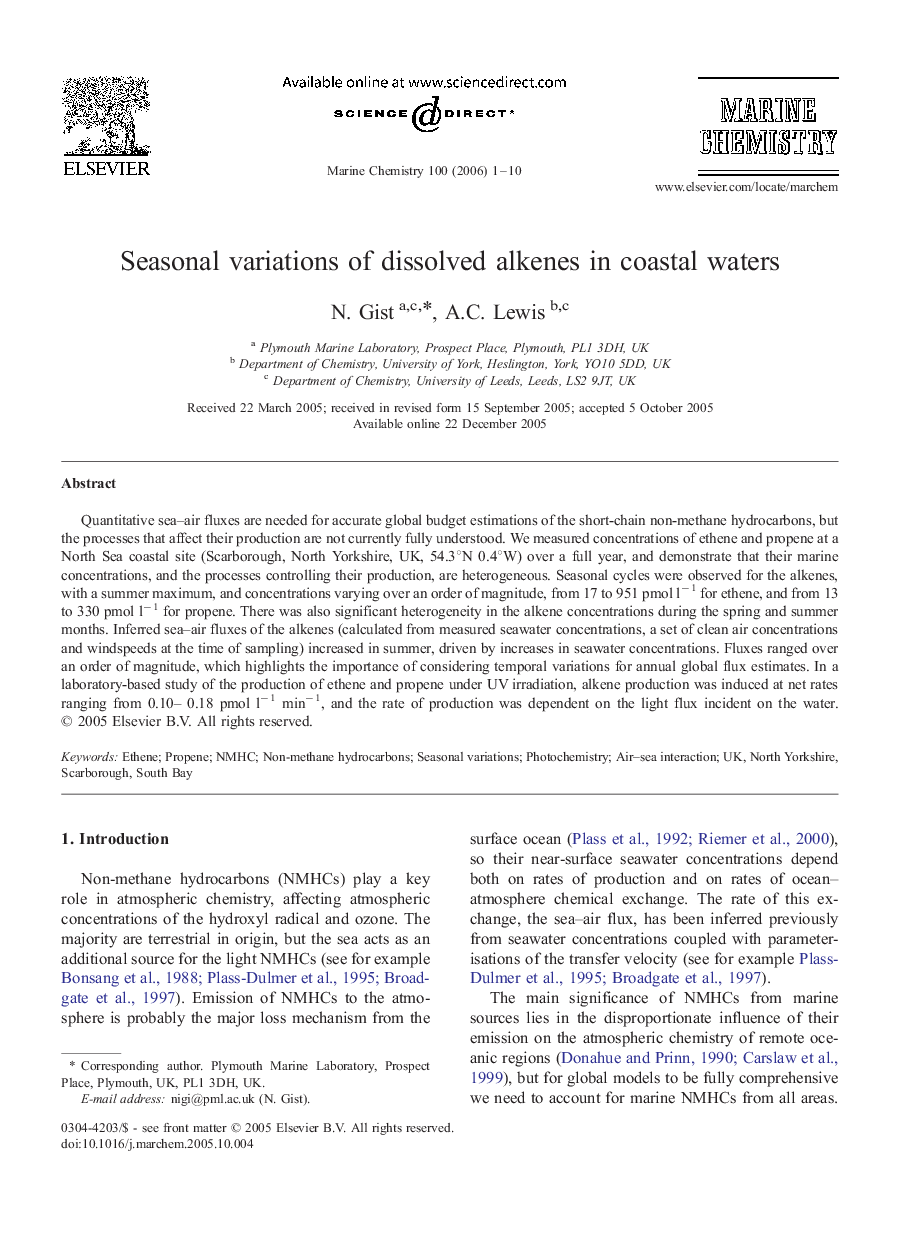| Article ID | Journal | Published Year | Pages | File Type |
|---|---|---|---|---|
| 1263585 | Marine Chemistry | 2006 | 10 Pages |
Abstract
Quantitative sea-air fluxes are needed for accurate global budget estimations of the short-chain non-methane hydrocarbons, but the processes that affect their production are not currently fully understood. We measured concentrations of ethene and propene at a North Sea coastal site (Scarborough, North Yorkshire, UK, 54.3°N 0.4°W) over a full year, and demonstrate that their marine concentrations, and the processes controlling their production, are heterogeneous. Seasonal cycles were observed for the alkenes, with a summer maximum, and concentrations varying over an order of magnitude, from 17 to 951 pmol lâ 1 for ethene, and from 13 to 330 pmol lâ 1 for propene. There was also significant heterogeneity in the alkene concentrations during the spring and summer months. Inferred sea-air fluxes of the alkenes (calculated from measured seawater concentrations, a set of clean air concentrations and windspeeds at the time of sampling) increased in summer, driven by increases in seawater concentrations. Fluxes ranged over an order of magnitude, which highlights the importance of considering temporal variations for annual global flux estimates. In a laboratory-based study of the production of ethene and propene under UV irradiation, alkene production was induced at net rates ranging from 0.10- 0.18 pmol lâ 1 minâ 1, and the rate of production was dependent on the light flux incident on the water.
Keywords
Related Topics
Physical Sciences and Engineering
Chemistry
Chemistry (General)
Authors
N. Gist, A.C. Lewis,
